#black indians
Text
I’m an old school injun!
#black tumblr#black love#black indians#carnival season#mardi gras#black history#louisiana#black culture
215 notes
·
View notes
Text
Black Indigenous People have always maintained a deep connection with nature, residing in regions along the equator where the scorching summer sun necessitated semi-nudity if we were to live comfortably.
In our culture, the objectification and violation of women were foreign concepts. We regarded the exposure of bare breasts as a natural occurrence, devoid of any lascivious intent. The decision to enter into a marital union was solely at the discretion of Indigenous Black Women, who chose to unite with a man when she deemed it appropriate.
However, our way of life underwent a profound transformation with the arrival of colonizers, who invaded our lands and subjected our men, women, and children to the horrors of rape. Driven by an insatiable desire for sexual gratification, these invaders violated our people, perpetuating harmful stereotypes that portrayed Black Indigenous women and men as hypersexual and indolent, despite both genders sharing equal responsibilities in our society.
As a Black Indigenous Man, I have personally witnessed the profound impact of the invaders' arrival. Fortunately, I had the privilege of growing up alongside my great grandparents and grandparents, who diligently passed down our ancestral history to me and my eleven siblings.
They often recounted the arduous and perilous journey endured by their own parents, imparting to us a profound understanding of our collective identity. Regrettably, the invaders have distorted and erased much of our Black Indigenous History, leaving us with a profound sense of sadness.
#black love#black history#black africans#black positivity#science#evolution#science side of tumblr#black indigenous people#black indians#african atheism#atheism
21 notes
·
View notes
Text
https://www.etsy.com/listing/1485754365/indigenous-native-spirit-doll
15 notes
·
View notes
Text
"Mardi Gras Indians are secretive because only certain people participated in masking--people with questionable character. In the old day, the Indians were violent. Indians would meet on Mardi Gras; it was a day to settle scores." - Larry Bannock, Past President, New Orleans Mardi Gras Indian Council
Masking Indian Indians Ranks Super Sunday
Keep-N-It-Real Indian Videos
Mardi Gras is full of secrets, and the Mardi Gras Indians are as much a part of that secrecy as any other carnival organization. Their parade dates, times and routes are never published in advance, although they do tend to gather in the same areas every year.
The Mardi Gras Indians are comprised, in large part, of the African-American communities of New Orleans's inner city. While these Indians have paraded for well over a century, their parade is perhaps the least recognized Mardi Gras tradition.
"Mardi Gras Indians--the parade most white people don't see. The ceremonial procession is loose, the parade is not scheduled for a particular time or route...that is up to the Big Chief." - Larry Bannock
Traditional Mardi Gras organizations form a "krewe." A krewe often names their parade after a particular Roman or Greek mythological hero or god. The ranking structure of a Mardi Gras Krewe is a parody of royalty: King, Queen, Dukes, Knights, and Captains, or some variation of that theme. Many of the more established krewes allow membership by invitation only.
Few in the ghetto felt they could ever participate in the typical New Orleans parade. Historically, slavery and racism were at the root of this cultural separation. The black neighborhoods in New Orleans gradually developed their own style of celebrating Mardi Gras. Their krewes are named for imaginary Indian tribes according to the streets of their ward or gang.
The Mardi Gras Indians named themselves after native Indians to pay them respect for their assistance in escaping the tyranny of slavery. It was often local Indians who accepted slaves into their society when they made a break for freedom. They have never forgotten this support.
Long ago, Mardi Gras was a violent day for many Mardi Gras Indians. It was a day often used to settle scores. The police were often unable to intervene due to the general confusion surrounding Mardi Gras events in the city, when the streets were crowded and everyone was masked. This kept many families away from the "parade," and created much worry and concern for a mother whose children wanted to join the Indians.
"'I'm gonna mask that morning if it costs me my life!' That morning you pray and ask God to watch over you, cause everybody is bucking for number one." - Larry Bannock
Today when two Mardi Gras Indian tribes pass one another, you will see a living theater of art and culture. Each tribe's style and dress is on display in a friendly but competitive manner. They compare one another's art and craftsmanship.
The Big Chiefs of two different tribes start with a song/chant, ceremonial dance, and threatening challenge to "Humba". The Big Chiefs demand that the other Chief bows and pays respect. The retort is a whoop and equally impressive song and war dance with the reply, "Me no Humba, YOU Humba!"
"You know when you've won, you see it in their eyes." - Larry Bannock
Although there was a history of violence, many now choose to keep this celebration friendly. Each Big Chief will eventually stand back and, with a theatrical display of self-confidence, acknowledge the artistry and craftsmanship of the other chief's suit.
Before the progression can continue, the two Big Chiefs will often comment privately to one another, "Looking good, baby, looking good!"
"After Mardi Gras, you thank GOD that you made it." - Larry Bannock
The good news is Mardi Gras day is no longer a day to "settle scores" among the Mardi Gras Indians. Now that the tradition and practice for the Indians to compare their tribal song, dance, and dress with other tribes as they meet that day, violence is a thing of the past.
The Mardi Gras Indian has invested thousands of hours and dollars in the creation of his suit, and will not run the risk of ruining it in a fight. This tradition, rich with folk art and history, is now appreciated by museums and historical societies around the world. It is a remarkable and welcome change from the past.
We hope you enjoyed reading about the Mardi Gras Indians as much as we have enjoyed bringing you the information about them. We thank the Mardi Gras Indian Council for opening their history books and sharing their history and traditions with us.
The History behind the masking of the Mardi Gras Indians is an extremely rich one. "If I had a heart attack at 92, I'd still mask. In New Orleans, you don't need a reason to do what you do, you do it because that's the way it is!"
- Larry Bannock, President, New Orleans Mardi Gras Indian Council
When we first talked to Larry Bannock about the traditions of the Mardi Gras Indians, we didn't realize how fascinating it would be. We would like to thank Larry for opening up his world and his home to us as he shares this long-held but little-known Mardi Gras and St. Joseph Day tradition with us. Most importantly, we have learned a lot about character.
Mardi Gras Indian Masking means designing /creating a new costume each year. Larry Bannock wears a hand-beaded and feathered suit of original design that weighs between 100 and 150 pounds. He wears this suit as he marches throughout the city on Mardi Gras Day, meeting the other chiefs along the way (see history). At times, he removes the heavier part of the suit, replacing it as he approaches another Indian Chief.
"Downtown Indians use sequins, feathers; Uptown Indians use beads, rhinestones, feathers. The only time Downtown and Uptown Indians come together is to parade on St. Joseph's day." - Larry Bannock
There are distinct design differences between the costumes of the Downtown Indians and the Uptown Indians. When these tribes meet, each Indian is so proud of the costume he has created...and a silent comparison of their beauty takes place. To honor the Italians, the Indians again suit up and meet on the evening of St. Joseph's day in and around their neighborhoods. However, all of the Mardi Gras Indians come together to celebrate what they call "Super Sunday" with a parade. It is a beautiful sight and occurs during the day on a Sunday near St. Joseph's Day.
"Making an Indian suit comes from your heart; the Indian suit for next year is in my mind. You have to feel something about the patch. It has to mean something to you--the eagle, the buffalo--every patch I do is a spirit. You have to be on fire." - Larry Bannock
Making a new suit is time-consuming and must be planned carefully. An Indian's costume may take up to a year to complete, starting with the conception of an idea for next year's suit. Ordering material, designing layout, sewing and beadwork follow. Larry, an uptown Indian Chief and President of the Mardi Gras Indian Council, had the design picked out for his '97 suit before Mardi Gras of '96.
After an artist friend draws the image upon the canvas, Larry decides upon the colored beads he will use to create a patch for his costume. The beadwork is done entirely by hand...and he does all of it himself. This bead art and the plumage selected each year make a glorious combination of color and texture that render his costumes such extraordinary works of art that some are now on display in museums throughout the country.
"Masking as a Mardi Gras Indian...it's dying, because it costs...over $1,000 for rhinestones, $320.00 for velvet, hundreds for beads, hundreds more for the feathers...it costs, yeah. People with families to support find it difficult." - Larry Bannock
One of the reasons there is so much interest in the Mardi Gras Indians is because it seems to be a dying tradition. When the costumes were made from whatever material could be found, there were many Indians. However, the designs of the costumes have become so elaborate that it is very difficult for many to afford the expense. Larry is able to afford to make his costume due to the generosity of some of his friends who contribute their skills and hard work. He is also asked to speak to others around the country about the rich history of the Mardi Gras Indian, and whatever he makes helps finance his next year's costume. However, it is often a struggle.
"Rex has designers; its King has no say on his costume. My suit is ME! I do the patchwork and rhinestones. I have people helping me hook up now, but there's only two patches I didn't do: a rattlesnake and a hatchet-- given to me by two older Indians. I'll always wear those patches." - Larry Bannock
Typical of Mardi Gras tradition, rarely will anyone outside of the immediate family and close friends have an opportunity to witness a suit's creation before Mardi Gras. National Geographic and 48 Hours, however, were lucky enough to go behind the scenes while doing a special on this tradition. The television crews even pitched in during the last hectic days before Mardi Gras.
It is all worthwhile for Larry when he steps out of his home, on Mardi Gras morning, into his waiting neighborhood in all of his glory.
His Mardi Gras Indian costume often surpasses the quality, intricacy and artistry seen in the costumes of many Mardi Gras Kings and Queens. Seeing the Indians in their suits marching, singing and dancing is to watch art come alive.
"The Spy Boy is first in the front: he is the baddest of all the Indians… he is ahead looking for trouble. Only a chosen few can be Spy Boy. It's his job to send a signal to First Flag when he sees other Indians. First Flag signals back down the line to Big Chief. Big Chief has a stick that controls the Indians. When he hits the ground with the stick, they better get down and bow to the Chief." - Larry Bannock
On Mardi Gras Day, if you're lucky enough to see some of the Mardi Gras Indians, the first Indian you're likely to see is the Spy Boy. His job places him ahead of the Big Chief's procession. Each Spy Boy has a method to signal potential trouble or approaching rival Indian tribes… with dancing, whooping, hollering, and hand language. His observations are communicated to the Big Chief who, in return, sends a set of directions and instructions back down the parade procession.
"I 'took' my position as a Spy Boy. Nobody gave it to me. I took it when someone else didn't do their job. Your heart and soul has to be there." - Larry Bannock
It is through this elaborate system of dances, whoops, flags and hand signals that the Big Chief is able to direct a progression multiple streets long… even though he is far away from the front of the parade. This communication network is important, as it allows the Big Chief time to adjust his suit, don his headdress, and prepare a song for an impending meeting with a rival tribe. Marching the streets on Mardi Gras Day on the way to meet other Indian tribes is a tribe's opportunity to have an entire year's worth of artistic effort appraised by an opponent artist.
"The route on Mardi Gras is always secret. Nobody knows where anybody's gonna be… that's why Spy Boy is ahead and looking for Indians. If he sights a gang, he tells Flag Boy that a gang is on its way." - Larry Bannock
The Flag Boy is the next ranking Indian. It is he who carries the "gang flag" – a huge staff decorated with feathers (seen on left) and the gang symbol. Generally Flag Boys are a block or two behind Spy Boys, and at least a block ahead of the Big Chief. Their responsibility is to pass along Spy Boy's information to the Big Chief, and return the Big Chief's response back to the Spy Boy. By raising his gang flag high in the air and using prearranged signals, the Flag Boy is able to keep the Big Chief and Spy Boy in direct communication. This allows the Big Chief control over the direction of the route his tribe will take. As mentioned, the progression can be many streets long. "Second Liners" are always present between the ranking Indians. They are usually not costumed, but provide much entertainment as they follow along dancing, singing, beating drums and playing tambourines.
Enjoy rarely seen videos of the New Orleans Mardi Gras Indians on Super Sunday (St. Joseph's Day).
Enjoy some of our favorite video clips from Mardi Gras. You can also watch video footage from years past, including celebrity interviews and the Zulu parade, from the Mardi Gras Inside and Out Video Series. For more videos, visit our YouTube Channel.
Mardi Gras Indians New Orleans Louisiana
Mardi Gras Indians New Orleans Louisiana
Mardi Gras Indians New Orleans Louisiana
Mardi Gras Indians New Orleans Louisiana
Mardi Gras Indians
Mardi Gras Indians New Orleans Louisiana
#Mardi Gras#Mardi Gras Indians#Mardi Gras History#New Orleans#Mardi Gras Indian Council#Black Indians
6 notes
·
View notes
Text
youtube
When the Seminole Indians Aligned With Escaped Slaves
The Black Seminoles were a group of people that history, for the most part, forgot about. Their alliance with the native Seminole tribes resulted in a unique relationship that had never been seen before, and that changed the course of history for both the Seminoles and the State of Florida as a whole.
The Black Seminoles, sometimes called Maroons, were a group of freed men and runaway slaves living in Florida during the mid-16th century. They settled the first free Black town in American history, attained their freedom by joining the Spanish and converting to Catholicism, and formed a tight cultural bond with the Seminole tribes.
#When the Seminole Indians Aligned With Escaped Slaves#Freedmen#florida#Seminoles#Black Indians#Black History Matters#Black History of Florida#Black History Month 2024#bhm24#2024#Youtube
5 notes
·
View notes
Text


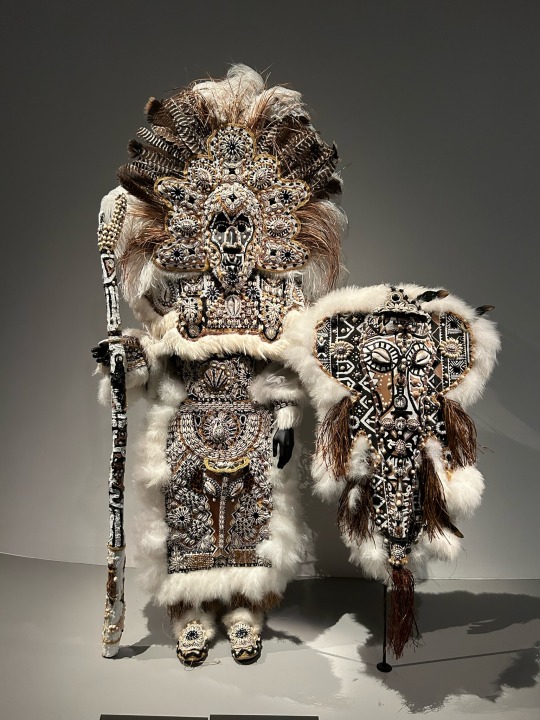

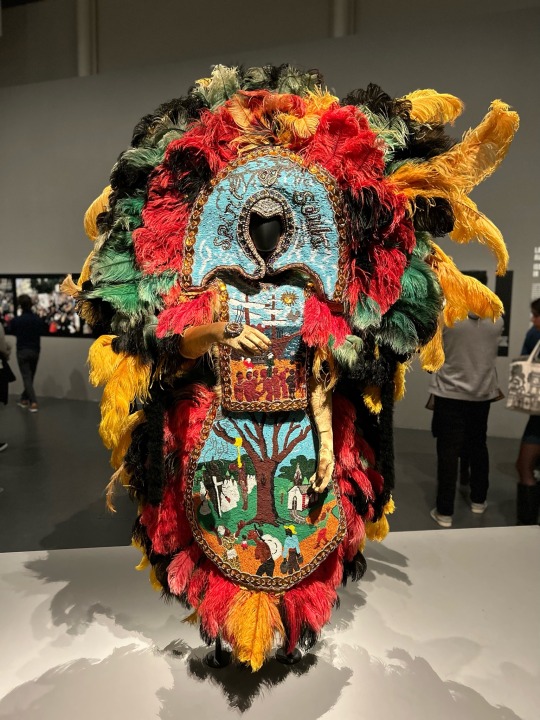
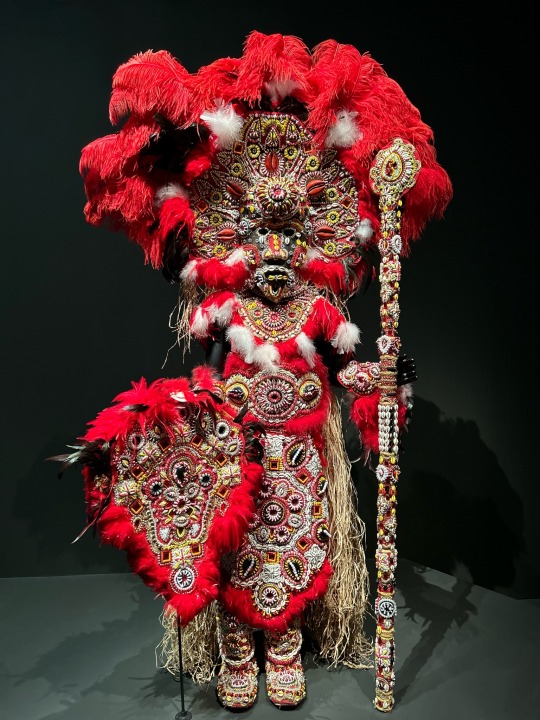



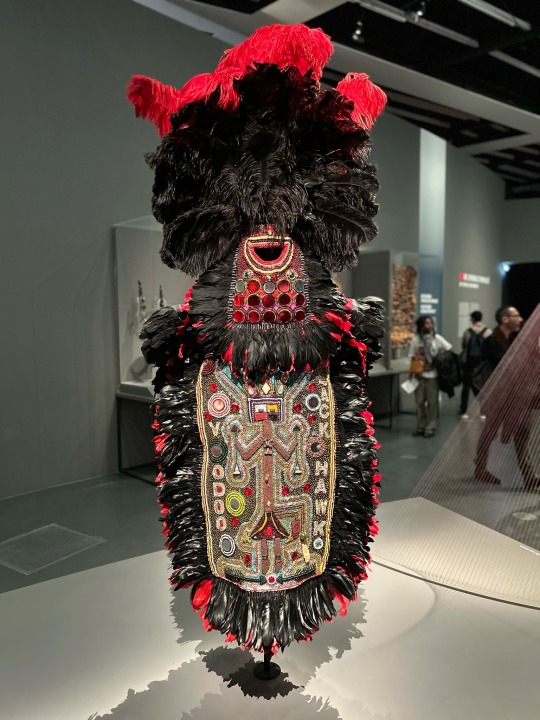
Black Indians quai Branly museum
6 notes
·
View notes
Text

0 notes
Text
The Yamassee
youtube
0 notes
Text
Vintage Photos of Queer Couples of Color

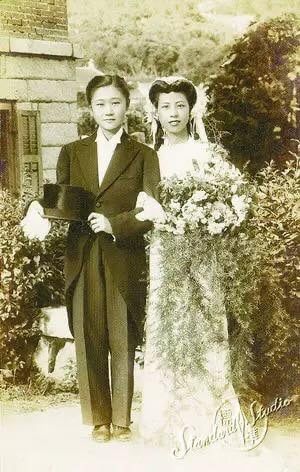

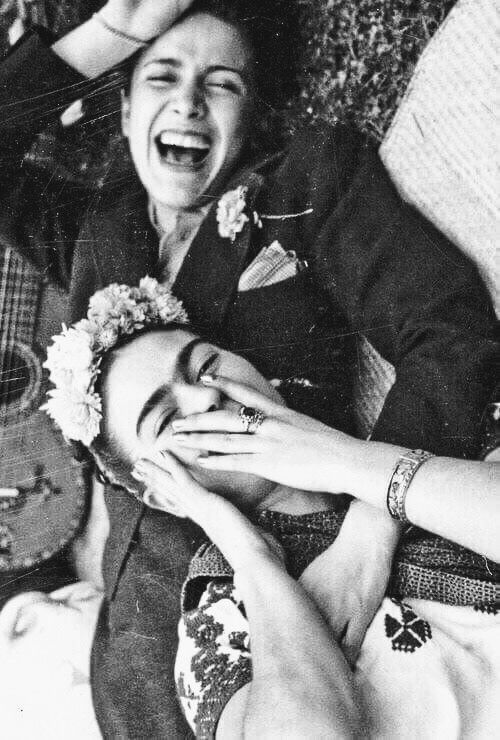
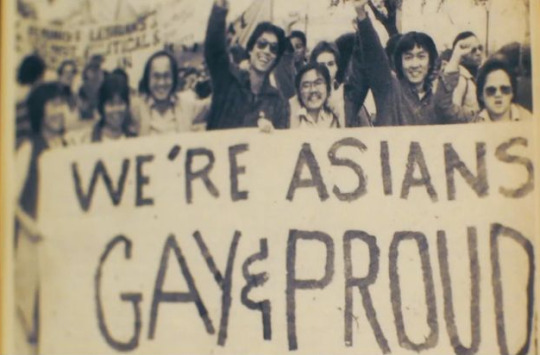
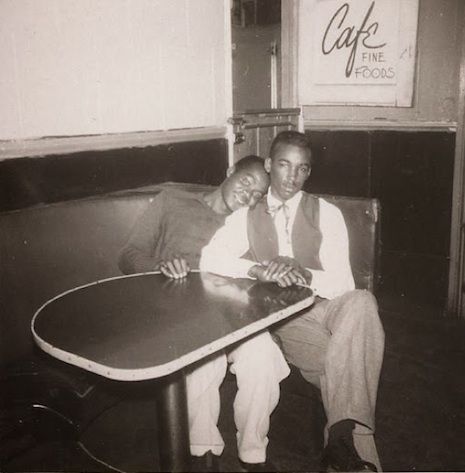


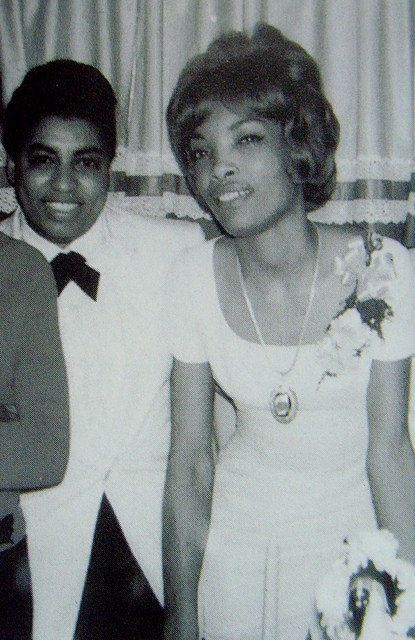
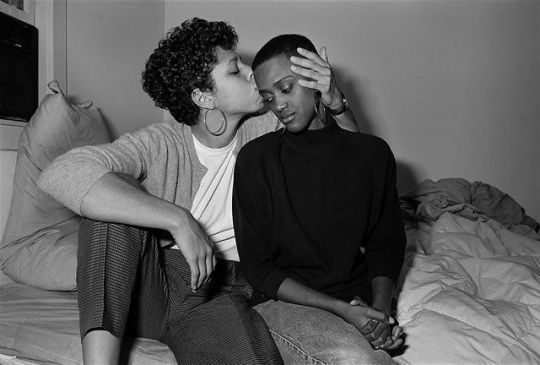
#queer#sapphic#lesbian#wlw#mlm#mlm post#mlm positivity#wlw yearning#wlw love#wlw positivity#queer history#black lesbian#gay man#black queer#black women#indian#desi#asian#lgbt pride#lgbtqia#lgbtq#lgbtq community#gay
17K notes
·
View notes
Link
Greater Mauritania was in the Americas is a necessary post to demonstrate the indigenous presence of the Moors in America since some people have labeled the Moors as being foreign invaders of the Americas from Europe and Africa. May this post bring peace and clarity. I thank you for your time and for your support.
#ancient history#moors#ancient egypt#black history#mauritania#black indians#florida#arabia#phoenician
1 note
·
View note
Text
Indian Women Are Leaving Their Racist Culture To Be With Black Men
youtube
We are calling out colorism and embracing our Blackness globally. This is what the Black on Black Love Movement is all about, not protesting and begging for acceptance from people who hates our very existence and we are calling out their fake race of whiteness.
Black on Black Love is Black, Brown skin and all in between to love each other and fuck the people who calls themselves white because they are no longer relevant to us.
#black love#black positivity#black africans#black history#science#evolution#science side of tumblr#black indigenous people#black asian#black indians#black Arabs#black aboriginal#black solidarity#Youtube
12 notes
·
View notes
Text
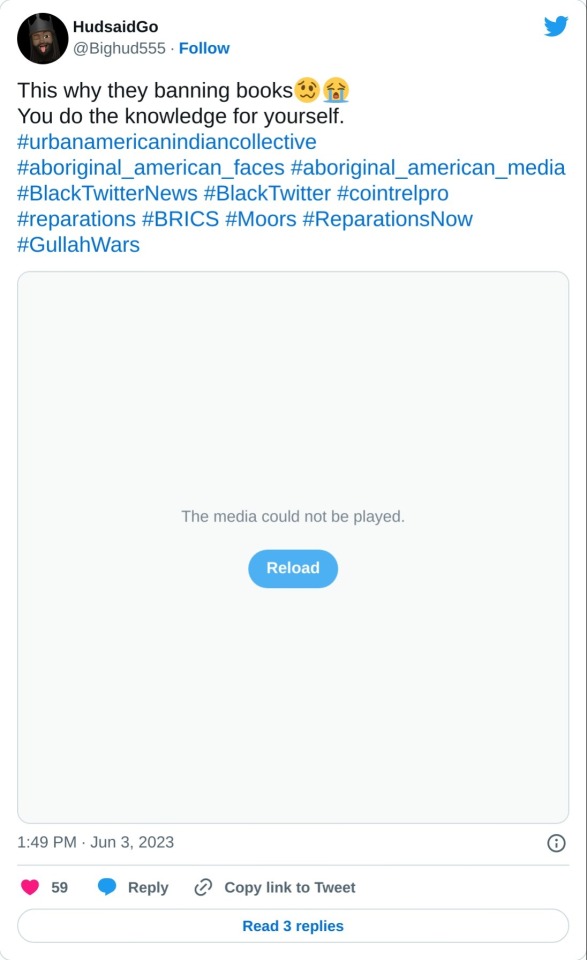
to see the full video showing the books - click here
#aboriginal#real history#aseatic#Black#Black Indians#indigenous#books#banning#book banning#stealing history#hiding history#white supremacy#stolen legacy
4 notes
·
View notes
Text
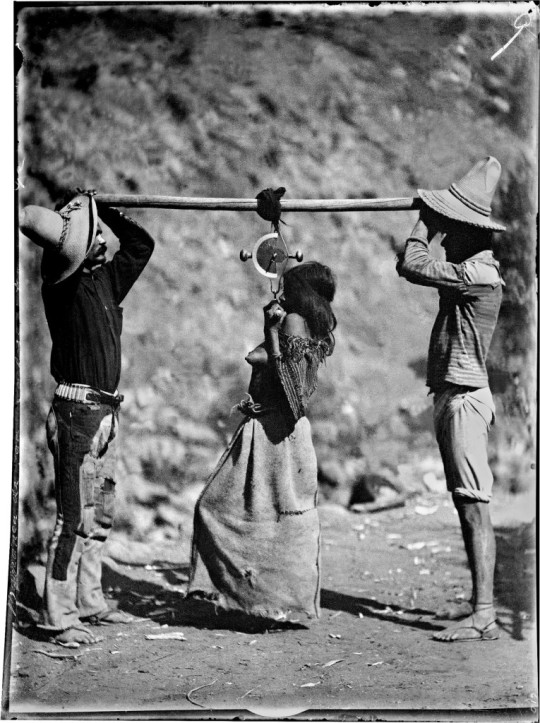
Neo-Griot
Kalamu ya Salaam's information blog
HISTORY: Indians, Slaves, and Mass Murder: The Hidden History
Indians, Slaves, and
Mass Murder:
The Hidden History
by Peter Nabokov
The Other Slavery:
The Uncovered Story of
Indian Enslavement in America
by Andrés Reséndez
Houghton Mifflin Harcourt, 431 pp., $30.00
An American Genocide:
The United States and the
California Indian Catastrophe, 1846–1873
by Benjamin Madley
Yale University Press, 692 pp., $38.00
Carl Lumholtz: Tarahumara Woman Being Weighed, Barranca de San Carlos (Sinforosa), Chihuahua, 1892; from Among Unknown Tribes: Rediscovering the Photographs of Explorer Carl Lumholtz. The book includes essays by Bill Broyles, Ann Christine Eek, and others, and is published by the University of Texas Press.
1.
The European market in African slaves, which opened with a cargo of Mauritian blacks unloaded in Portugal in 1441, and the explorer Christopher Columbus, born in Genoa ten years later, were closely linked. The ensuing Age of Discovery, with its expansions of empires and exploitations of New World natural resources, was accompanied by the seizure and forced labor of human beings, starting with Native Americans.
Appraising that commercial opportunity came naturally to an entrepreneur like Columbus, as did his sponsors’ pressure on him to find precious metals and his religion’s contradictory concerns both to protect and convert heathens. On the day after Columbus landed in 1492 on an island in the present-day Bahamas and saw its Taíno islanders, he wrote that “with fifty men they could all be subjected and made to do all that one wished.” Soon the African trade was changing life in Spain; within another hundred years most urban families owned one or more black servants, over 7 percent of Seville was black, and a new social grouping of mixed-race mulattos joined the lower rungs of a color-coded social ladder.
Columbus liked the “affectionate and without malice” Arawakan-speaking Taíno natives. He found the men tall, handsome, and good farmers, the women comely, near naked, and apparently available. In exchange for glass beads, brass hawk bells, and silly red caps, the seamen received cotton thread, parrots, and food from native gardens. Fresh fish and fruits were abundant. Glints in the ornaments worn by natives promised gold, and they presumably knew where to find more. Aside from one flare-up, there were no serious hostilities. Columbus returned to Barcelona with six Taíno natives who were paraded as curiosities, not chattel, before King Ferdinand and Queen Isabella.
The following year, Columbus led seventeen ships that dropped 1,500 prospective settlers on Caribbean beaches. As they stayed on, relations with local Indians degenerated. What was soon imposed was “the other slavery” that the University of California, Davis, historian Andrés Reséndez discusses in his synthesis of the last half-century of scholarship on American Indian enslavement. First came the demand for miners to dig for gold. The easy-going Taínos were transformed into gold-panners working under Spanish overseers.
The Spaniards also exploited the forms of human bondage that already existed on the islands. The Caribs of the Lesser Antilles, a more aggressive tribe, regularly raided the Taínos, allegedly eating the men but keeping the women and children as retainers. A similar discrimination based on age and gender would prevail throughout the next four centuries of Indian-on-Indian servitude. As Bonnie Martin and James Brooks put it in their anthology, Linking the Histories of Slavery: North America and Its Borderlands:
North America was a vast, pulsing map of trading, raiding, and resettling. Whether the systems were pre- or postcontact indigenous, European colonial, or US national, they grew into complex cultural matrices in which the economic wealth and social power created using slavery proved indivisible. Indigenous and Euro-American slave systems evolved and innovated in response to each other.*
Taínos who resisted the Spanish were set upon by dogs, disemboweled by swords, burned at stakes, trampled by horses—atrocities “to which no chronicle could ever do justice,” wrote Friar Bartolomé de las Casas, a crusader for Indian rights, in 1542. Against the Caribs the Spaniards had a tougher time, fighting pitched battles but capturing hundreds of slaves as well. Columbus sailed home from his second voyage with over a thousand captives bound for slave auctions in Cádiz (many died en route, their bodies tossed overboard). He envisioned a future market for New World gold, spices, cotton, and “as many slaves as Their Majesties order to make, from among those who are idolators,” whose sales might underwrite subsequent expeditions.
Thus did the discoverer of the New World become its first transatlantic human trafficker—a sideline pursued by most New World conquistadors until, in the mid-seventeenth century, Spain officially opposed slavery. And Columbus’s vision of a “reverse middle passage” crumbled when Spanish customers preferred African domestics. Indians were more expensive to acquire, insufficiently docile, harder to train, unreliable over the years, and susceptible to homesickness, seasickness, and European diseases. Other obstacles included misgivings by the church and royal authorities, which may explain Columbus’s emphasis on “idolators” like the Caribs, whose status as “enemies” and cannibals made them more legally eligible for enslavement.
Indians suffered from overwork in the gold beds, as well as foreign pathogens against which they had no antibodies, and from famine as a result of overhunting and underfarming. Within two generations the native Caribbean population faced a “cataclysmic decline.” On the island of Hispaniola alone, of its estimated 300,000 indigenous population, only 11,000 Taínos remained alive by 1517. Within ten more years, six hundred or so villages were empty.
But even as the Caribbean was ethnically cleansed of its original inhabitants, a case of bad conscience struck Iberia. It had its origins in the ambivalence of King Ferdinand and Queen Isabella over how to treat Indians. In the spring of 1495, only four days after the royals advised their bishop in charge of foreign affairs that slaves “would be more easily sold in Andalusia than in other parts,” they ordered a halt to all human enslavement until the church informed them “whether we can sell them or not.” Outrage was more overt in the polemics of Las Casas, who had emigrated to the islands in 1502. He had owned slaves and then renounced the practice in 1515. After taking his vows as a Dominican priest, he helped to push the antislavery New Laws of the Indies through the Spanish legal system in 1542.
Slaving interests used a succession of verbal strategies for justifying and retaining unfree Indian labor. As early as 1503 tribes designated as “cannibals” became fair game, as were Indian prisoners seized in “just wars.” Hereafter labeled esclavos de guerra (war slaves), their cheeks bore a branded “G.” Automatic servitude also awaited any hapless Indians, known as esclavos de rescate (ransomed slaves), whom Spanish slavers had freed from other Indians who had already enslaved them; the letter “R” was seared into their faces.
In 1502 Hispanola’s new governor, Nicolás de Ovando, made use of an old feudal practice for ensuring control over workers’ bodies. To retain native miners but check rampant cruelty, Ovando bestowed on prominent colonizers land grants (encomiendas) that included rights to tribute and labor from Indians already residing there. Although still vassals, they remained nominally free from “ownership.” They could reside in their own villages, were theoretically protected from sexual predation and secondary selling, and were supposed to receive religious instruction and token compensation of a gold peso a year—benefits that were often ignored. Over the next two centuries the encomienda system and other local forms of unfree labor were used to create a virtually enslaved Indian workforce throughout Mexico, Florida, the American Southwest, down the South American coast, and over to the Philippines.
The story of Native American enslavement told by Reséndez becomes confused by the convoluted interplay of indigenous and imported systems of human servitude. Despite his claim of uncovering “the other slavery,” when speaking of the forms of bondage imposed on Indians he fails to acknowledge that there was no monolithic institution akin to the “peculiar” transatlantic one that would become identified with the American South, which imported Africans auctioned as commodities. Even the distinction some scholars draw between such “slave societies” and “societies with slaves” (depending on whether slave labor was essential or not to the general economy) only partially applies to the highly complex, deeply local situations of enslaved American Indians. For these blended a dizzying variety of customary practices with colonial systems for maintaining a compulsory native workforce. If Reséndez is claiming to encompass the full tragedy of Indian slavery “across North America,” he does not distinguish among the different colonial systems of Indian servitude—enabled by Indian allies of the colonizers—that existed under English, French, and Dutch regimes.
During the seventeenth century, as some Spaniards continued to raise the question of the morality of slavery, silver mines opened in northern Mexico, and the demand for Indian manpower increased. This boom would require more workers than the Caribbean gold fields and last far longer. Now the physical effort turned from surface panning or shallow trenching to sinking shafts hundreds of feet into the ground. More profitable than gold, silver was also more grueling to extract. Miners dug, loaded, and hauled rocks in near darkness for days at a time. Around present-day Zacatecas, entire mountains were made of the gray-black ore.
To meet the growing labor demand, Spanish and Indian slaving expanded out of the American Southwest, sending Pueblo and Comanche slaves to the mines, and seizing slaves from the defiant Chichimec of northern Mexico during particularly violent campaigns between the 1540s and the 1580s. From the beginning of the sixteenth century to the first decade of the nineteenth, twelve times as much silver was extracted from over four hundred mines scattered throughout Mexico as was gold during the entire California Gold Rush.
At Parral, a silver-mining center in southern Chihuahua and in 1640 the largest town north of the Tropic of Cancer, over seven thousand workers descended into the shafts every day—most of them enslaved natives from as far off as New Mexico, which soon became “little more than a supply center for Parral.” After the state-directed system for forcibly drafting Indian labor for the Latin American silver mines, known as the mita, was instituted in 1573, it remained in operation for 250 years and drew an average of ten thousand Indians a year from over two hundred indigenous communities.
As Reséndez shifts his narrative to the Mexican mainland, however, one is prompted to ask another question of an author who claims to have “uncovered” the panoramic range of Indian slavery. Shouldn’t we know more of the history of those Indian-on-Indian slavery systems that Columbus witnessed and that became essential for delivering workers to Mexican mines, New Mexican households, or their own native villages? Throughout the pre-Columbian Americas, underage and female captives from intertribal warfare were routinely turned into domestic workers who performed menial tasks. Through recapture or ransom payment some were repatriated, while many remained indentured their entire lives. But a number were absorbed into their host settlement through forms of fictive kinship, such as ceremonial adoption or most commonly through intermarriage.
Among the eleventh-century mound-building Indian cultures of the Mississippi Bottoms, such war prisoners made up a serf-like underclass. This civilization collapsed in the thirteenth century and the succeeding tribes we know as Choctaw, Cherokee, Creek, and others perpetuated the practice of serfdom; Cherokee war parties added to each town’s stock of atsi nahsa’i, or “one who is owned.” The custom continued across indigenous America, with child-bearing women and prepubescent males generally preferred. Their husbands and fathers were more commonly killed. Reséndez hardly mentions the subsequent participation of those same tribes in the white man’s race-based “peculiar institution.” They bought and sold African-American slaves to work their Indian-owned plantations. Once the Civil War broke out there was a painfully divisive splitting of southern Indian nations into Confederate and Union allies.
As with Carib predation upon the Taíno, it was not uncommon for stronger tribes to focus on perennial victims. In the Southeast, the Chickasaw regularly took slaves from the Choctaw; in the Great Basin, the Utes stole women and children from the Paiute (and then traded them to Mormon households that were happy to pay for them); in California, the northeastern Modoc regularly preyed upon nearby Atsugewi, while the Colorado River–dwelling Mojave routinely raided the local Chemehuevi. These relationships between prey and predator might extend over generations. Only among the hierarchical social orders of the northwest coast, apparently, were slaves traditionally treated more like commodities, to be purchased, traded, or given as gifts.
Indirectly, the Spanish helped to instigate the next upsurge in human trafficking across the American West. Their horses—bred in northern New Mexico, then rustled or traded northward after the late seventeenth century—made possible an equestrian revolution across the plains. In short order the relationships between a few dozen Indian tribes shifted dramatically, as the pedestrian hunter-and-gatherer peoples were transformed by horses into fast-moving nomads who became dependent on buffalo and preyed on their neighbors. In white American popular culture the new-born horse cultures would be presented as the war bonnet–wearing, teepee-dwelling, war-whooping stereotypes of Wild West shows and movie screens. Among them were the Comanches of the southern plains and the Utes of the Great Basin borderlands.
By the mid-eighteenth century, the Comanche military machine had put a damper on Spanish expansionism. Their cavalry regiments of five hundred or more disciplined horsemen undertook eight-hundred-mile journeys northward as far as the Arkansas River and southward to within a few hundred miles of Mexico City. The slaves they plucked from Apaches, Pueblos, and Navajos became their prime currency in business deals with Mexicans, New Mexicans, and Americans. At impromptu auctions and established crossroads, Native American, Mexican, and Anglo slaves were being sold, some undergoing a succession of new masters. Until the US government conquered them, the Comanches held sway over a quarter-million square miles of the American and Mexican borderlands.
Reséndez argues for continuities in this inhuman traffic right down to the present day. But his abrupt transition to the present after the defeat of the Comanches only reinforces our sense that his effort has been overly ambitious and weakly conceived, as if achieving the promised synthesis for so complex and persistent a topic has simply (and understandably) overwhelmed him. His treatment of the multinational practices of Colonial-period slavery is spotty, and the ubiquitous traditions of native-on-native enslavement seem soft-pedaled.
Reséndez loosely estimates that between some 2.5 to five million Indians were trapped in this “other slavery,” in which overwork and physical abuse doubtlessly contributed to the drop of 90 percent in the North American Indian population between Columbus’s day and 1900. But somehow little of all that torment comes across vividly in The Other Slavery. We are told that Navajos called the 1860s, when their entire tribe was hounded for incarceration in southern New Mexico, “the Fearing Time.” Aside from that hint of the collective emotional impact from the victims’ side, we get few testimonies that reflect the anxiety and terror behind Reséndez’s many summaries of human suffering, tribal dislocations, furtive lives on the run, and birthrights lost forever.
A more convincing sense of the racial discrimination and hatred that bolstered and perpetuated the slavery systems discussed in Reséndez’s book comes from even a melodramatic film like John Ford’s The Searchers (1956), while the terrors of surviving in the late-eighteenth-century West amid roving bands of merciless slave raiders are better evoked in Cormac McCarthy’s Grand Guignol masterpiece Blood Meridian(1985). Reading Reséndez’s account one hopes in vain for something similar to Rebecca West’s quiet comment in Black Lamb and Grey Falcon (1941), her chronicle of Yugoslavian multiethnic animosities: “It is sometimes very hard to tell the difference between history and the smell of a skunk.”
2.
Indian slavery becomes a contributing factor in An American Genocide, the UCLAhistorian Benjamin Madley’s extensive argument that genocide is the only appropriate term for what happened to native peoples in north-central California between 1846 and 1873. For American Indians, slavery in the New World took many forms that persevered over four centuries while changing according to local conditions, global pressures, and maneuvers to evade abolitionist crusades. Genocide—the elimination of entire groups—might seem easier to evaluate. Yet which historical episodes of mass Indian murder qualify as genocide has become a matter of debate.
Madley shies away from the hyperbolic accusations of genocide or holocaust often made in simplistic discussions of American Indian history. The definition that he invokes with prosecutorial ferocity is the one produced by the United Nations Genocide Convention of 1948, which defines genocide as, first, demonstrating an intent to destroy, “in whole or in part, a national, ethnic, racial or religious group,” and, second, committing any of the following acts: killing members of a group; causing them serious bodily or mental harm; inflicting conditions that are intended to cause their destruction in whole or in part; imposing measures to prevent births within the group; and transferring children of the group to another group. Whereas the large unspecified “group” referred to in this post–World War II statement was, of course, defined by the Nazis, Madley’s is smaller and, even then, it is composed of many hundreds of indigenous units, each an autonomous, small-scale cultural world that was decimated or destroyed.
Madley has documented his charge of genocide by years of scrolling through local newspapers, histories, personal diaries, memoirs, and official letters and reports. These revealed what many indigenous groups endured at the hands of US military campaigns, state militia expeditions, impromptu small-town posses, and gold miners, as well as ordinary citizens who hunted natives on weekends. Most western historians and demographers could agree that genocidal behavior toward a North American Indian population occurred during the nineteenth century. But Madley has concentrated on the killing in California during the bloody years between 1846 and 1873.
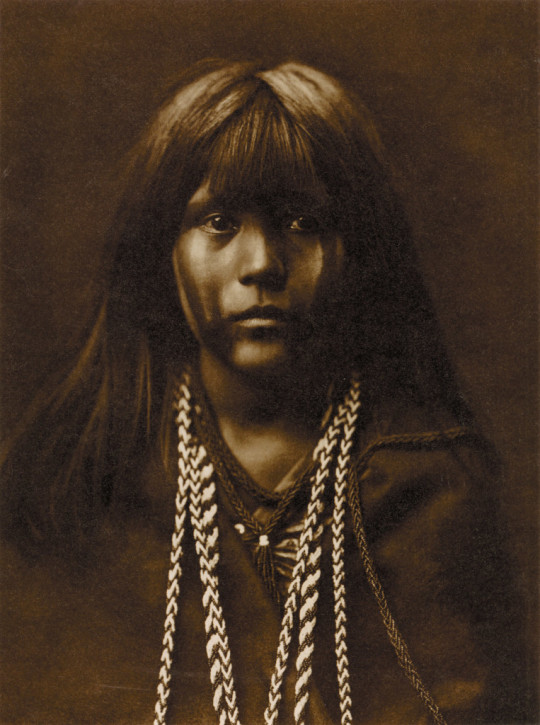
Edward S. Curtis: Mosa—Mohave, 1903/1907; from Edward S. Curtis: One Hundred Masterworks. The book is by Christopher Cardozo, with contributions by A. D. Coleman, Louise Erdrich, and others. It is published by Delmonico/Prestel and the Foundation for the Exhibition of Photography.
The factors that led to this American tragedy are worth recalling. Many Indian communities had already been defeated in their resistance to servitude during the Spanish Mission and Mexican Rancho years. The United States victory over Mexico in early 1848 opened the way to the last great American land rush. Until California became the nation’s thirty-first state in 1850, there were two years of lawlessness. The Anglo-American settlers whose wagons began rolling into the region carried anti-Indian attitudes imported from colonial times. The discovery of gold in early 1848 multiplied that immigration and aggressive settler colonialism. There was pervasive racism toward the state’s diverse and generally peaceful native population. They were denigrated as animal-like “Diggers”—a pejorative term based on their food-gathering customs. Political, military, journalistic, and civic leaders favored creating a de facto open season on its native peoples.
When the state’s first legislature convened, it passed a number of orders that, according to Madley, “largely shut Indians out of participation in and protection by the state legal system” and granted “impunity to those who attacked them.” The legislature funded, with $1.51 million, state vigilantism coupled with exhortations from top officials, including two state governors, to war against Native Americans. Near the beginning of this campaign, California’s first governor, Peter Burnett, pledged that “a war of extermination will continue to be waged…until the Indian race becomes extinct.”
At the time of first contact with whites, the native California population amounted to some 350,000, perhaps the densest concentration of Indians in the country. But they were divided into at least sixty major tribes that, in turn, were made up of scores of small, independent, autonomous villages that spoke upward of a hundred separate languages. After the epidemics, mission programs, land losses, and peonage of the Spanish period, about 150,000 Indians remained on the eve of the US takeover. By 1870 the number of California Indians had been cut to under 30,000, a population loss that would continue until it bottomed out at under 17,000 by the turn of the century.
When gold was struck near present-day Sacramento in January 1848, Indians were occupying some of the most desirable natural environments in North America. The size of these Indian groups ranged widely. The proximity of so many autonomous villages made bi- or even trilingualism not uncommon. But especially in the north-central region—with its abundant acorn groves, salmon-rich rivers, valleys plentiful in fruits, roots, and seeds, foothills teeming with game, plentiful marine life, wildfowl and associated plants along the sea coast and wetlands—their small, self-governing and self-sufficient villagers could thrive in their homelands. However, the combination of Spanish and American invasions would cost the Indians and their fragile ecologies dearly. Meadows bearing life-giving nutritious seeds and roots were put to the torch for conversion into agricultural fields and cattle pastures, streams were poisoned by the sludge from mining, and forests were cut for lumber.
To characterize these fairly self-contained worlds, the dean of California Indian studies, anthropologist Alfred L. Kroeber, coined the term “tribelet.” But when it came to describing the sufferings of these California tribelets during the Gold Rush, Kroeber wrote dismissively of their “little history of pitiful events,” which, as an ethnographer drawn to “millennial sweeps and grand contours,” he felt unable to comment upon.
That did not stop one of his colleagues, the anthropologist Robert Heizer, from doing so. Heizer’s revelatory They Were Only Diggers (1974), along with his other anthologies, compiled newspaper clippings and reports on the myriad killings and other brutalities experienced by the region’s Indians. Together with a state demographer, Sherburne Cooke, he began documenting the unpublicized story of the California Indian catastrophe. Now Benjamin Madley, building upon the ethnohistorical work of Heizer and Cooke, has delved more systematically into the outrages of the period.
His chronicle opens with accounts by Thomas Martin and Thomas Breckenridge, members of John C. Frémont’s early expedition, which invaded what was still Mexican-held territory. In April 1846, along the Sacramento River near the present-day city of Redding, Frémont’s troops encountered a large group of local Wintu Indians. With the command “to ask no quarter and to give none,” his troops encircled the Indians and began firing at everyone in sight. Breckenridge wrote: “Some escaped but as near as I could learn from those that were engaged in the butchery, I can’t call it anything else, there was from 120 to 150 Indians killed that day.” Martin estimated that “in less than 3 hours we had killed over 175 of them.” A third eyewitness account found by Madley raised that estimate to between six hundred and seven hundred dead on land, not counting those, possibly an additional three hundred, slaughtered in the river. “The Sacramento River Massacre,” he writes, may have been one of the least-reported mass killings in US history, and “was the prelude to hundreds of similar massacres.”
So begins Madley’s calm, somber indictment. One after another he describes the cultures and the histories of tribes that were victimized, and he profiles the victimizers. Many of the atrocities were committed not only by US soldiers and their auxiliaries but also by motley companies of militiamen that murdered young and old, male and female indiscriminately—and often with an undisguised glee that comes through in Madley’s abundant selection of quotes.
Rape was rampant, and natives were intentionally starved, tortured, and whipped. Under the new California Legislature’s Government and Protection of the Indians Act of 1850, any nonworking, publicly drunk, or orphaned and underage Indians could become commodities in an unfree labor system that was tantamount to slave auctions. The act’s impact on the young meant that ten years after its passage, thousands of California Indian children were serving as unpaid “apprentices” in white households.
For over a quarter-century, Madley shows how the region became a quilt of many killing fields. Of the estimated 80 percent decline in the California Indian population during these years, around 40 percent has been attributed to outright “extermination killings” alone. Yet each of these tribes and tribelets functioned as an independent cultural world. Each was knit together by strands of kinship and deep attachments to place, as well as oral traditions about both that were passed on from generation to generation. Strewn across California were not only human bodies, but entire worldviews.
At the start of the Gold Rush, the Yuki Indians who lived at the heart of the region had well over three thousand members; they were reduced to less than two hundred by its end. The same decline occurred among the Tolowa Indians to the northwest, while the Yahi people were practically wiped out altogether.
In the hateful rhetoric of many nineteenth-century military, religious, and bureaucratic hard-liners quoted by Madley, the word “extermination” was often used. Yet this outcome was considered no great tragedy for an entire people who were uniformly and irredeemably defined as savage and subhuman.
Madley’s nearly two hundred pages of appendices are the most complete incident-by-incident tally ever compiled of Indian lives lost during this terrible period. Asking for names would have been impossible; instead we get numbers of deceased and places where they perished—one or two with brains smashed on rocks on a particular day over here, thirty to a hundred shot to death and left floating in a river over there. This scrupulously detailed epilogue is the equivalent of a memorial wall that we are visiting for the first time.
#Indians#Slaves#Mass Murder:#The Hidden History#black lives matter#Black Indians#Neo-Griot#Kalamu ya Salaam#Black Global History
3 notes
·
View notes
Text
Why did I already see two posts talking about how weird it is that Pavitr and Hobie are besties despite Pavitr’s clear resentment towards the British?
Like what parallels do you people even conjure up between White monarch colonizers stealing Indian possessions vs a Black anarchist punk?
Y’all just stay calling Black people colonizers for no reason
#across the spiderverse#hobie brown#pavitr prabhakar#there are Black and Indian people living in Britain for a reason did y’all consider that?#anyways same energy as calling Black Americans colonizers
4K notes
·
View notes
Text

WE WERE HERE BEFORE COLUMBUS
ARTWORK BY 𝖆𝖓𝖈𝖎𝖊𝖓𝖙𝖙𝖍𝖊𝖇𝖑𝖆𝖈𝖐𝖆𝖓𝖌𝖊𝖑
1 note
·
View note
Text
The Tobacco People
youtube
1 note
·
View note